The A-Z of how artificial intelligence is changing the world

 Alamy
AlamyArtificial intelligence can no longer be considered a technology of the future – it is already shaping our everyday lives. Here is our guide to understanding the minds of machines.
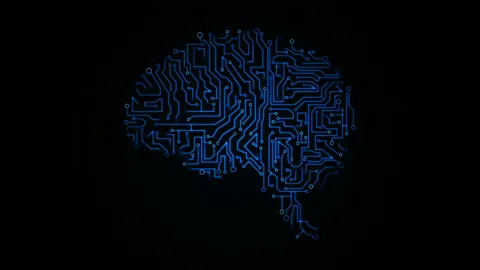 Getty Images
Getty ImagesSince the early days of computers, scientists have strived to create machines that can rival humans in their ability to think, reason and learn – in other words, artificial intelligence.
While today’s AI systems still fall short of that goal, they are starting to perform as well as, and sometimes better than, their creators at certain tasks. Thanks to new techniques that allow machines to learn from enormous sets of data, AI has taken massive leaps forward.
AI is starting to move out of research labs and into the real world. It is having an impact on our lives. There can be little doubt that we are entering the age of artificial intelligence.
(Image credit: Getty Images)
 Alamy
AlamyBut with these challenges, there has been mounting pressure on technology giants to fix them.
 Getty Images
Getty ImagesThese talkative machines use the power of two branches of AI, natural language processing and natural language generation, to interact with human users. They appear on social media feeds, customer service pages and websites to provide conversation, advice and companionship – and they are transforming the way we interact with organisations including utilities companies, adult websites, pizza delivery firms, online stores, banks and even governments.
(Image credit: Getty Images)
Designing new components for cars or aircraft is a slow, painstaking process, but artificial intelligence can generate millions of innovative new shapes and configurations in just a few hours. With a few simple instructions, the algorithm produced new highly efficient designs for a drone in the video above. Companies like General Motors and Airbus are among those using AI to help them design new components. (Video credit: AutoDesk, Inc)
 Getty Images
Getty ImagesThe world is witnessing its worst humanitarian crisis on record: an estimated 68.5 million people are currently displaced from their homes by drought, famine or war.
But artificial intelligence could help. Researchers working with the UN have been building algorithms that can use data on energy generation, economic growth, population size and food production to predict where future migration crises may occur.
(Image credit: Getty Images)
 Getty Images
Getty ImagesThe result of a football match can hang on a single split-second decision made by a player. If the athlete had chosen to pass the ball rather than shoot at goal, for example, their team’s fortunes may have changed dramatically.
(Image credit: Getty Images)
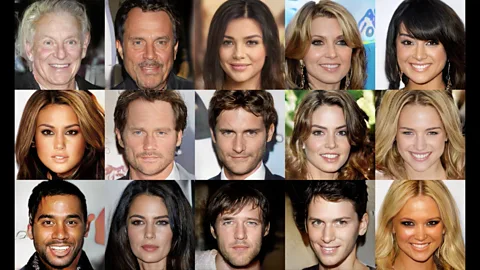 Nvidia
NvidiaNone of these people exist. They may appear to have the well-honed features of celebrities, but in fact these faces have been dreamed up by a type of AI computer system known as a generative adversarial network, or Gan.
As the name suggests, these are comprised of algorithms that work in opposition to each other. One is trained on a set of data – in this case celebrity photos – which it uses to produce its own versions. A second computer network then judges the work to see if it can spot differences between the computer-generated images and the originals. In response, the first network tweaks how it produces its celebrity photos in an attempt to fool the other network. The result is an ever more realistic set of images.
While early Gan-generated images were low resolution messes that regularly produced pictures of faces with too many eyes or melted-looking features, as this video illustrates, they can now able to ‘grow’ realistic photo-quality images over time. (Video credit: Nvidia)
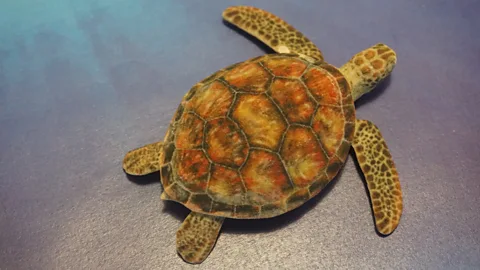 MIT
MITWhile the capabilities of machines have taken a leap forward in recent years, they still get things wrong in hilarious, and sometimes concerning, ways. Take the AI Tetris-playing bot that decided the best way to avoid losing was to indefinitely pause the game.
Others can be fooled in baffling ways. Scientists at the Massachusetts Institute of Technology recently demonstrated that popular machine vision algorithms used to identify objects in images and camera footage can be fooled into thinking a model of a sea turtle is a rifle, or a baseball is an espresso. They did this by subtly changing the texture of the objects so they look like one thing to our eyes – but like something else to the machines.
“There is a concern that if real-world systems – the machine vision in a self-driving car, for example – were attacked in this way, it could cause real harm,” warns Anish Athalye, the researcher who led the study.
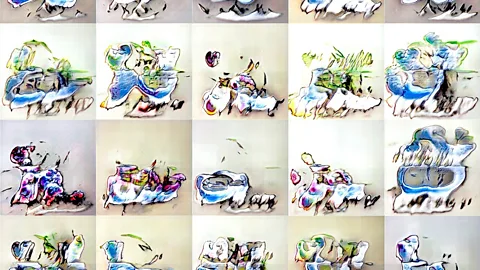 Helena Sarin
Helena SarinOne thing that has become clear as machine learning is used more frequently is that machines see the world very differently from us. While humans intuitively absorb knowledge about how the world works from birth, machines have to be specifically taught these rules. But freed from these constraints, they also produce some wild visions that are helping to inspire artists, musicians and filmmakers.
Machine vision researcher and artist Helena Sarin feeds her own drawings to a Gan (see g is for…) which then produces strangely beautiful images like those shown here.
Image credit: (Helena Sarin)
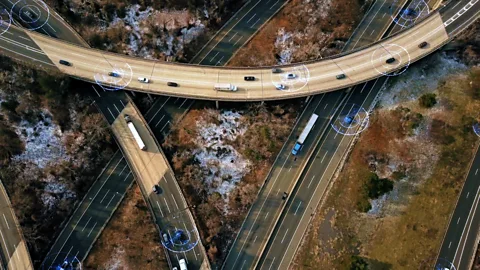 Getty Images
Getty ImagesThe ebb and flow of traffic on busy roads and cities is difficult to predict. It varies with human behaviour, road conditions, time of day and year, weather and accidents.
(Image credit: Getty Images)
 Maeve/Ravelry
Maeve/RavelryTrained on existing patterns, artificial intelligence is being used to create new fashion and textile designs. One imaginatively named experiment, called SkyKnit, has created bizarre tentacle-strewn knitting patterns with unique stitches that have gathered their own cult following.
(Image Credit: Maeve/Ravelry)
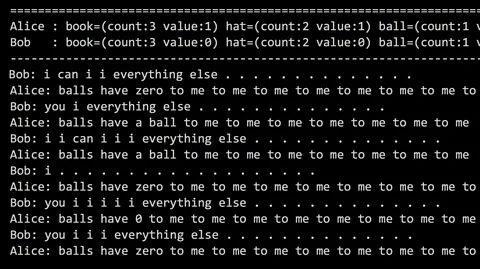 Facebook
FacebookOur ability to communicate with the spoken and written word is among the defining features of our species. A branch of machine learning that trains algorithms to understand and reproduce language is threatening that position.
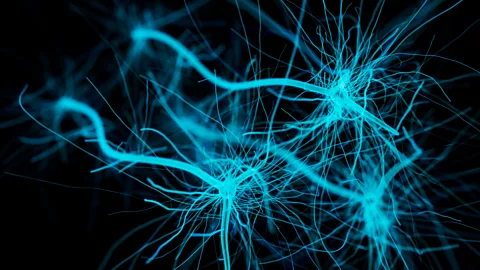 Getty Images
Getty ImagesWhile other approaches to developing AI exist, machine learning has largely powered much of the recent leaps and bounds in the field. It is designed to loosely mimic the way humans themselves gather knowledge – through learning. But while humans can pick up patterns or a skill from just a few examples, machines require vast amounts of data.
Reams of information are fed to webs of code that form connections between different parts of the network as it identifies patterns, giving it the ability to interpret future data.
n is for… neural networks
To create machines that can think like humans, computer scientists have understandably turned to nature to solve the problem, creating algorithms that mimic the structure of the brain. To do this, they are creating networks of algorithms designed to act like the neurons in the brain. Connections between these mathematical neurons form to create clusters as the machine learns.
(Image credit: Getty Images)
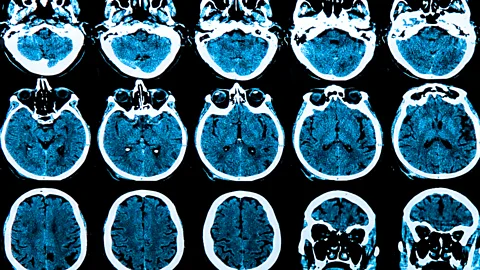 Getty Images
Getty ImagesWhile spotting patterns that might otherwise elude human eyes is an area where machines excel, some of the most exciting areas of AI lie in their ability to predict the future too.
A growing suite of AI-powered applications that can spot cancers or the early signs of eye disease are being used by doctors around the world, but recently researchers showed that AI can also predict whether someone might suffer conditions like Alzheimer’s disease years before they show any symptoms.
(Image credit: Getty Images)
 Getty Images
Getty ImagesPolice forces around the world are testing AI systems that could help them to catch more criminals faster. In the UK, for example, one force is trialling a facial recognition system that can identify a suspect from just a portion of their face, such as an ear. Another system developed in Spain scours crime scene photographs for signs of evidence that can link crimes.
AI systems are also being used to help police and courts make decisions about whether a suspect should be held in custody or released on bail by predicting their risk of committing other offences.
(Image credit: Getty Images)
 Getty Images
Getty ImagesLike other natural disasters, earthquakes are notoriously difficult to predict. But computers deploying deep learning – a form of machine learning – can predict the location of devastating aftershocks that often cause further death and destruction.
(Image credit: Getty Images)
 Getty Images
Getty ImagesA foul-mouthed, slang-slinging silicon lyricist, Deep-flow is a rhyme-busting AI that can spit out rap lyrics so fluently, it can be hard to distinguish from the real deal.
(Image credit: Getty Images)
 Getty Images
Getty ImagesAI is already creeping into our homes in the form of voice-activated assistants and in our phones, but its potential goes far beyond simply answering questions. As more appliances and devices are connected to home networks, AI can be used to manage them. Smart thermostats powered by AI can tune your heating to your lifestyle, while sensors that analyse data from your home electricity metre can identify a distinct ‘fingerprint’ of each appliance that can be identified to help switch off power-hungry devices when not in use.
 Getty Images
Getty ImagesDeveloped by computing pioneer Alan Turing, the Turing test is considered to be one of the key measures of artificial intelligence. Turing suggested that a way of testing a machine’s ‘intelligence’ would be its ability to fool a human into thinking it was human. In some areas, this has arguably been achieved, with chatbots that can convincingly converse with humans or write realistic looking online reviews. But some critics point out that the Turing Test doesn’t measure true intelligence – only the ability to mimic it.
u is for… unsupervised learning
Early forms of machine learning used data such as images that had been painstakingly labelled to help algorithms identify the objects they contained. But more recently researchers have been using another approach. Unsupervised learning allows the algorithms to draw their own inferences by looking for patterns in the data they are given.
(Image credit: Getty Images)
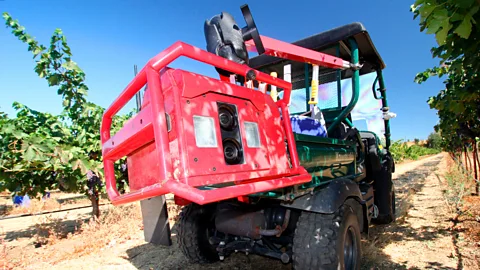 Efficient Vineyard Project
Efficient Vineyard ProjectMachine vision algorithms allow computers to recognise everything from faces to cats and galaxies in images or video footage. But in the US and Europe, researchers are combining machine vision with other AI systems to help farmers better manage their crops.
(Image credit: Efficient Vineyard Project)
 Getty Images
Getty ImagesWith the vast areas of dense vegetation covering East Africa, poachers frequently melt away undetected after killing their prey. Patrolling the skies overhead with drones, however, has allowed conservationists to use machine vision systems to spot poachers in infrared footage. Other systems use AI to monitor endangered species with the help of mosquitoes or to track illegal wildlife goods, such as ivory and rhino horns, on social media.
(Image credit: Getty Images)
 Getty Images
Getty ImagesForget creepy looking sex-robots, intelligent sex toys or seductive chatbots. Artificial intelligence is being put to use against the darker side of the sex industry. Investigators are using it to scour the internet for signs of illegal sex rings or to track down victims of human traffickers who have ended up as sex slaves.
(Image credit: Getty Images)
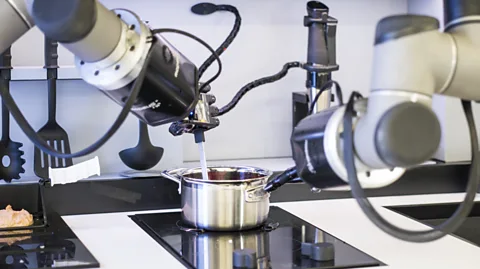 Moley Robotics
Moley Robotics(Image credit: Moley Robotics)
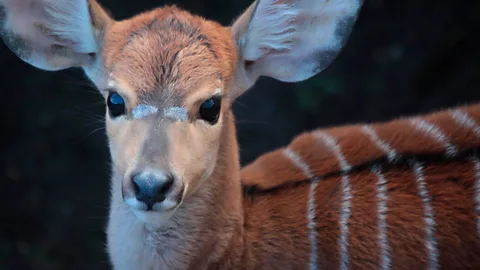 Getty
GettyNyala antelope are native to the hot, dry savanna of southern Africa. So when winter arrives at Marwell Zoo near Winchester, England, they can find it a little chilly. To compensate, the zoo has installed an experimental heater system that uses infrared sensors and machine learning to keep the animals comfortable inside.
(Image credit: Getty Images)
Source link





